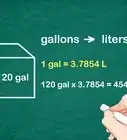wikiHow is a “wiki,” similar to Wikipedia, which means that many of our articles are co-written by multiple authors. To create this article, volunteer authors worked to edit and improve it over time.
This article has been viewed 34,263 times.
Learn more...
The five number summary is an important way of organizing data to show statistical importance through dispersion. This summary consists of the minimum, Quartile 1 (Q1), median (Q2), Quartile 3 (Q3), and the maximum; usually organized in that specific order on a box plot. The lower quartile (Q1) consists of the lower 25% of the data while the upper quartile (Q3) contains 25% of the highest numbers in the data set or 75% of the entire data. This statistical analysis is very useful for larger data because the median identifies the center of the data, the minimum and maximum gives the length of the data and the quartiles allows for further analysis of an assortment. [1]
Steps
Preparing the Data for Calculation
-
1Determine the amount of numbers in your data set. You can do this by counting all of the numbers in the data set.
- Example: In a data set 1,3,4,5,11,12,14,20,11,2 there are 10 numbers in the data set
-
2Organize the data in increasing order. Starting with the smallest number value up to the largest number.
- Organize the data by scanning and writing down the numbers in increasing number.
- While scanning cross out the numbers that were already used to keep track
- Example: In a data set 1,3,4,5,11,12,14,20,11,2 the numbers would be organized as 1,2,3,4,5,11,11,12,14,20
Advertisement -
3Write down or memorize the equations for both quartiles and the median.[2]
- The 1st Quartie equation ¼ (n+1)
- The median equation ½(n+1)
- The 3rd Quartile ¾(n+1)
Calculating the First Quartile
-
1Plug in the value of n in the First Quartile formula. ¼(n+1)
- Example: In a data set 1,2,3,4,5,11,11,12,14,20 n=10, the equation will be ¼(10+1)
-
2Solve the equation: Solving the equation will not give the exact answer of Quartile 1, it will instead give the position of the number.
- Example: In a data set 1,2,3,4,5,11,11,12,14,20 n=10, the equation will be ¼(10+1) which equals 11/4 or 2.75. This means that the first Quartile is located at position 2.75 in the data set.
-
3Use the solution from the equation to find the number at that position. After solving the equation, use the answer to find the location in the data set where the quartile is located.
- Example: In a data set 1,2,3,4,5,11,11,12,14,20 because the equation gave the decimal 2.75, the 1st Quartile is located between the 2nd and 3rd numbers in the data set
-
4Find the average of the numbers to the left and to the right of the position.If a decimal is calculated
- A decimal means that the quartile is located in between the two numbers located left and right of it.
- Add the left and right numbers together then divide by two
- Example: In a data set 1,2,3,4,5,11,11,12,14,20 the number is in the 2.75th position which is between the 2nd and 3rd numbers meaning we take (2+3) then divide by 2 which equals 2.5[3]
Find the Median
-
1Plug in the value of n into the Median formula. ½(n+1)
- Example: In a data set 1,2,3,4,5,11,11,12,14,20 n=10, The equation will be ½(10+1)
-
2Solve the equation. Solving the equation will give you the location of the number (median) in the data set.
- Example: In a data set 1,2,3,4,5,11,11,12,14,20 n=10, The equation ½(10+1) will equal 5.5, which places the median at position 5.5
-
3Locate the median in the data set. Use the position received from solving the median equation to locate the data.
-
4Find the average of the numbers right and left of the value received from the equation if it is an even number of data.
- Example: In a data set 1,2,3,4,5,11,11,12,14,20 n=10 the median is located position 5.5 which is between the 5th and 6th number. To find the median we will take the average of the 5th and 6th numbers. Taking the average means adding the two numbers together and dividing by 2.
- Example: 1,2,3,4,5,11,11,12,14,20 the numbers beside 5.5 is 5 and 11 therefore the equation goes (5+11)/2=8. The Median then equals 8.
-
5If it is an odd number of data then the position given by the equation will be the exact position of the median.
- Example:#*Example: In a data set 1,2,3,4,5,11,11,12,14,20,20 n=11, plug 11 in equation ½(11+1) the median will be at position 6 so the median is 11.
Calculate the Upper Quartile
-
1Plug in the value of n in the Third Quartile formula. ¾ (n+1)
- Example: In a data set 1,2,3,4,5,11,11,12,14,20 n=10, The equation will be ¾ (10+1)
-
2Solve the equation. The solving of the equation will not give the 3rd Quartile it will instead give the position of the number.
- Example: In a data set 1,2,3,4,5,11,11,12,14,20 n=10, The equation will be ¾ (10+1) will equal 33/4 .This means that the third Quartile is located at position 8.25.
-
3Use the solution from the equation to find the number at the position. After computing the equation use the answer to find the location in the data set where the quartile is located.
- Example: In a data set 1,2,3,4,5,11,11,12,14,20 the number is in the 8.25th position, therefore, the 3rd Quartile is between the 8th and 10th numbers
-
4Find the average of the numbers to the left and the right of the position if a decimal is calculated from the equation.
- Add the left and right numbers together then divide by two.
- Example: In a data set 1,2,3,4,5,11,11,12,14,20 the number is in the 8.25th position which is between the 8th and 10th numbers meaning we take (12+14) then divide by 2 which equals 13
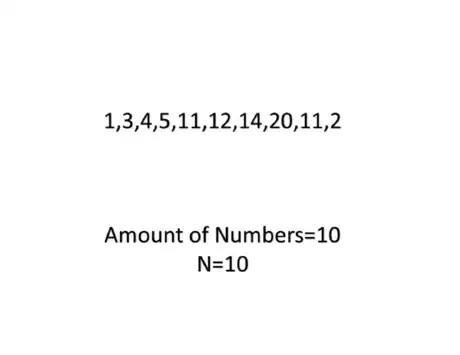
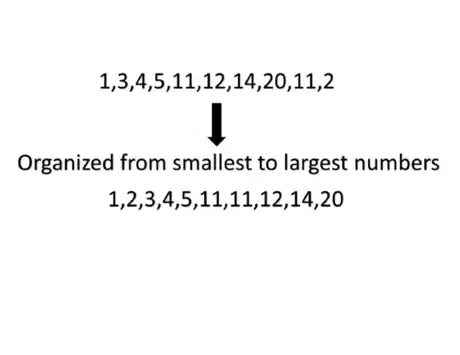
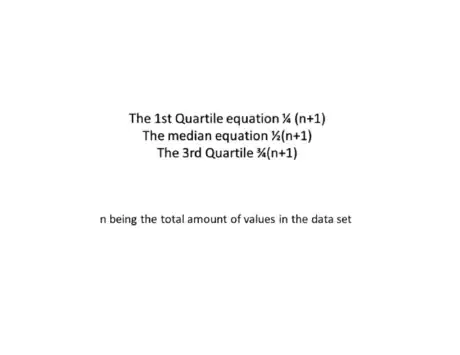
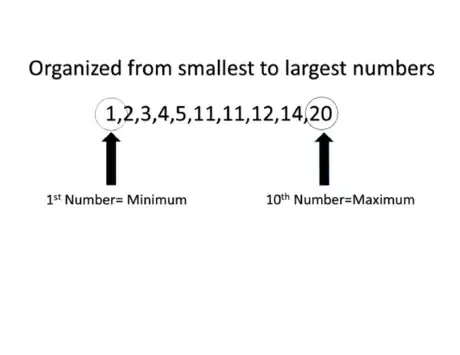
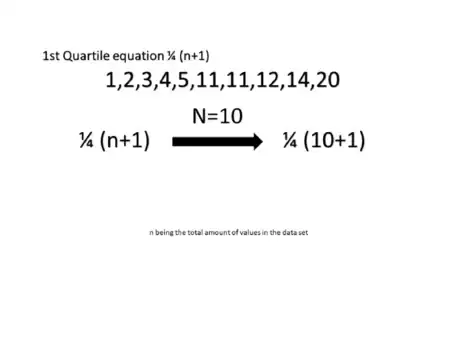
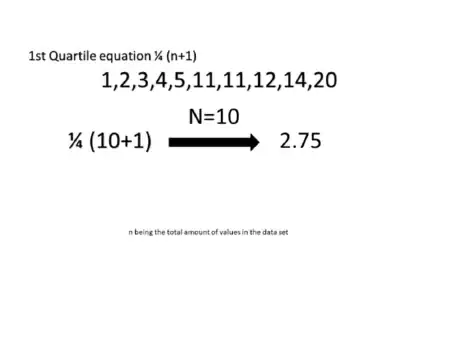

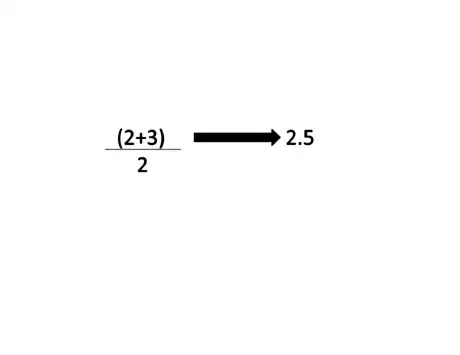
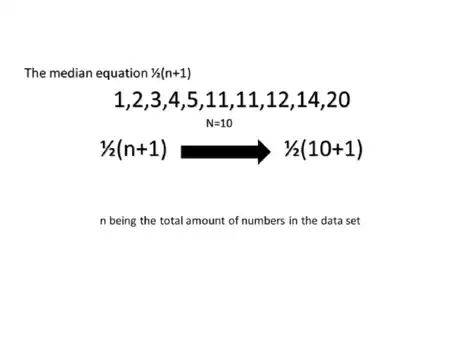

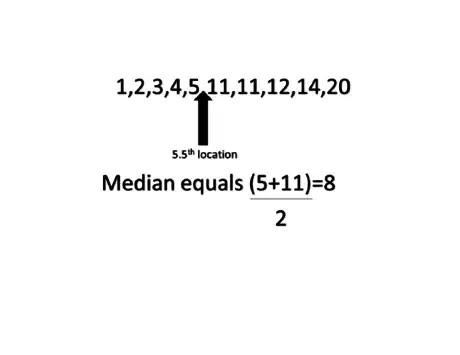
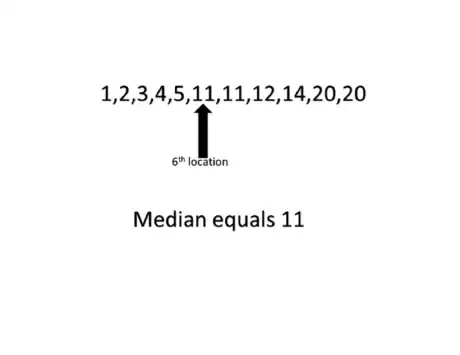

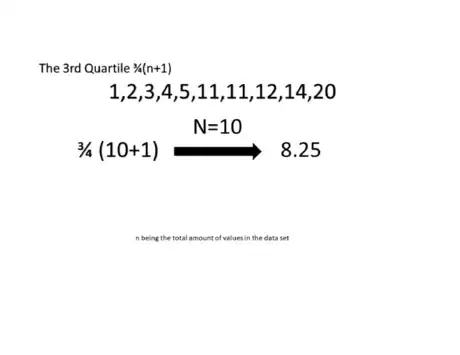

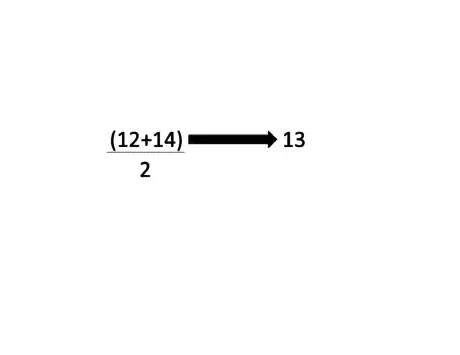
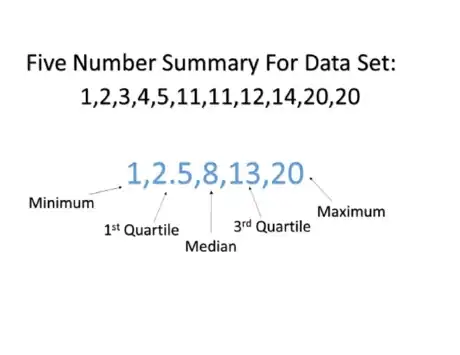
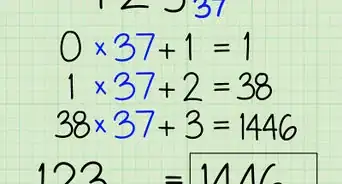
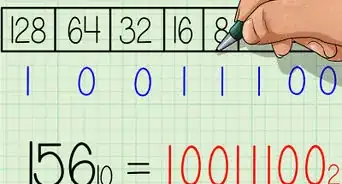
-to-Grams-(g)-Step-8-Version-5.webp)
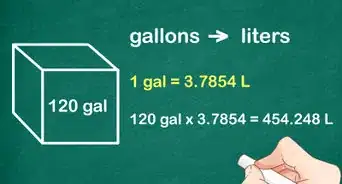
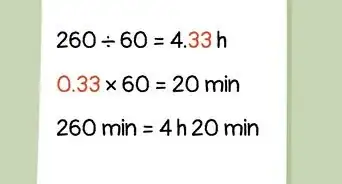
-to-Fahrenheit-(°F)-Step-6-Version-2.webp)
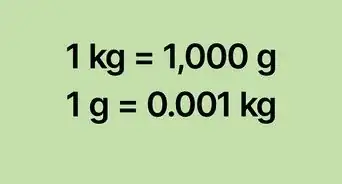

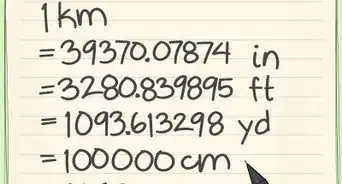

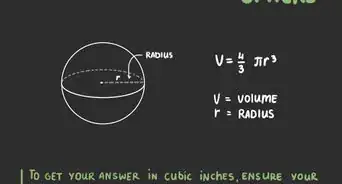
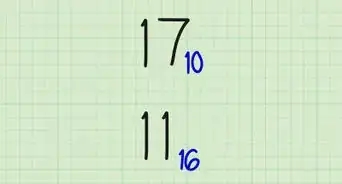
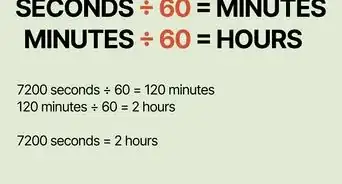
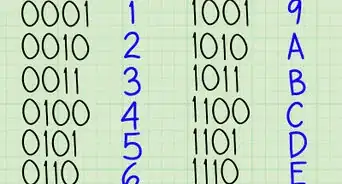






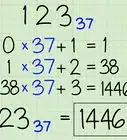

-to-Grams-(g)-Step-8-Version-5.webp)
